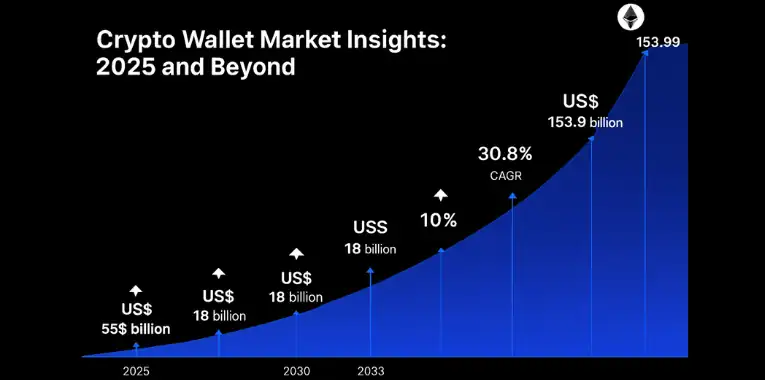Nadcab Labs is a trusted cryptocurrency wallet development company delivering secure, scalable, and custom crypto wallet solutions for startups, enterprises, and blockchain platforms. We specialize in building high-performance blockchain wallets for mobile, web, and desktop environments, designed to support real-world adoption and long-term growth. Our crypto wallet development services focus on enterprise-grade security, seamless user experience, and flexible architecture. From advanced key management and multi-chain integration to MPC-based security and intuitive UI/UX, we help businesses launch reliable wallet platforms that meet modern blockchain and compliance requirements.
As a top cryptocurrency wallet development company, we specialize in delivering cutting-edge, reliable, advanced and user centered crypto wallet development services with the help of artificial intelligence to transform the digital financial environment.
Wallet Developers On-Board
Wallet Development Projects Delivered
Years Of Experience
Global Client

Our crypto wallet development services that focus on security, scalability and support for multiple blockchain networks. Our solutions improve user experience, strengthen asset security, and facilitate quicker transactions, enabling businesses to create robust and forward-looking crypto wallet app development services.
A node manager connects the wallet to multiple blockchain networks and verifies transactions without relying on third-party services. By running light nodes for chains like Bitcoin, Ethereum, and Solana, it ensures decentralization, reliability and faster validation. This builds user trust and improves overall wallet transparency and performance.
Account abstraction allows the wallet to support flexible, smart contract based accounts with features like gasless transactions, spending limits and multi-signature approval. Users gain improved control, customization and security while interacting with blockchain networks. It enhances usability without needing protocol changes.
The DApp browser allows users to explore Web3 applications directly within the wallet, providing access to DEXs, DeFi platforms, NFT marketplaces and blockchain games without external apps. This ensures safer connections, faster transactions, and a smoother experience, letting users interact securely with on-chain through a single interface.
The wallet follows essential BIP standards like BIP-32, BIP-39 and BIP-44 to ensure compatibility and secure key management. These protocols enable deterministic wallets, mnemonic backups and organized multi-asset handling. Supporting these standards improves interoperability, recovery and wallet reliability, helping users manage digital assets safely and efficiently.
The integrated crypto swap feature enables instant token conversion within the wallet without centralized exchanges. It aggregates prices from multiple decentralized exchanges to provide competitive rates and fast execution. Users can swap assets like ETH to USDC seamlessly, enjoying secure, efficient and simplified trading directly inside the wallet.
Cross-chain capability enables smooth transfers between different blockchain networks, allowing users to bridge assets like USDT from Ethereum to Solana. The wallet supports cross-chain staking, liquidity farming and multi-network asset movement. This expands user flexibility and increases earning opportunities.
The on-ramp and off-ramp system lets users buy crypto with fiat currencies like INR, USD or EUR and convert crypto back to cash. Payments use UPI, cards or bank transfers. Withdrawals go directly to bank accounts with full KYC/AML compliance, ensuring safe, legal, convenient and seamless onboarding for global users.
The wallet offers real-time cryptocurrency prices, instant portfolio tracking and historical chart analysis. Users can view asset values in local currency, set price alerts and monitor market movements easily. This provides accurate insights for informed decisions, helping users manage portfolios effectively and stay updated without relying on external tools.
The wallet provides built-in staking and DeFi yield farming options, letting users earn passive rewards from assets like ETH, DOT or ADA. It also supports liquidity pools for additional income. The system tracks APY, rewards and performance automatically, giving users a convenient, secure and transparent way to grow digital assets within the wallet.
A reputable crypto wallet development company guarantees robust security by combining advanced encryption, secure key management, and multilevel authentication. Crypto wallets are secure, compliant, and ready to use worldwide by adhering to solutions in accordance with worldwide standards.
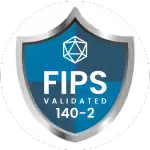







Nadcab Labs is a reliable cryptocurrency wallet development company that combines innovation, security, and scalability to deliver high-performance wallet solutions. We help startups, enterprises, and Web3 platforms build secure and user-friendly crypto wallets designed for real-world adoption and long-term growth. Our blockchain-focused development approach ensures every wallet solution meets modern security standards while remaining flexible for future upgrades.
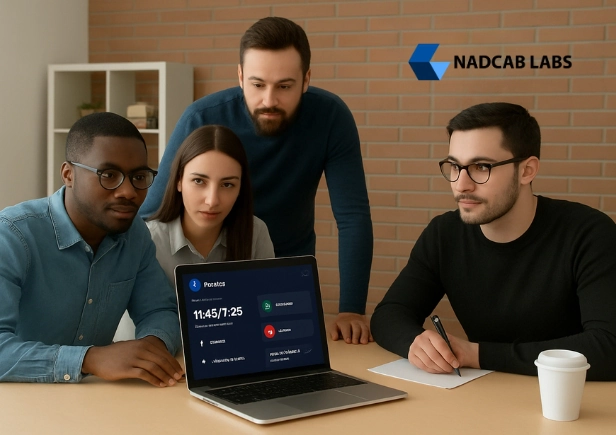
Our team consists of experienced crypto wallet developers and blockchain architects who specialize in building secure, scalable, and future-ready wallet solutions. We have delivered projects across multi-chain wallets, USDT wallets, DeFi platforms, NFT ecosystems, and enterprise blockchain applications, ensuring technical depth across diverse use cases.
We follow a client-first crypto wallet development process where your business goals guide every technical decision. From concept validation to deployment, we design custom cryptocurrency wallet solutions focused on usability, security, and seamless user experience. This approach allows us to deliver wallet platforms aligned with product vision, target users, and market requirements.
Security and compliance are built into every wallet we develop. Our cryptocurrency wallet solutions are designed to support AML, KYC, GDPR, and PCI DSS compliance requirements, making them suitable for enterprise-grade and regulated environments. This ensures your wallet platform is secure, reliable, and ready for global operations.
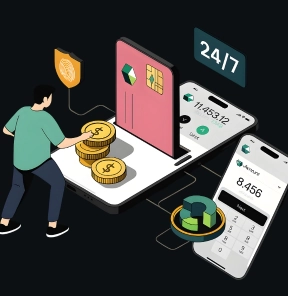
We provide dedicated 24/7 support to ensure uninterrupted performance of your crypto wallet platform. From blockchain network upgrades and wallet enhancements to performance optimization and scalability improvements, our team is always available to support your growth.
See how our cryptocurrency wallet development expertise has helped startups and enterprises turn bold ideas into high-performing platforms. From crypto trading platforms to Web3 tools, these success stories speak for themselves.
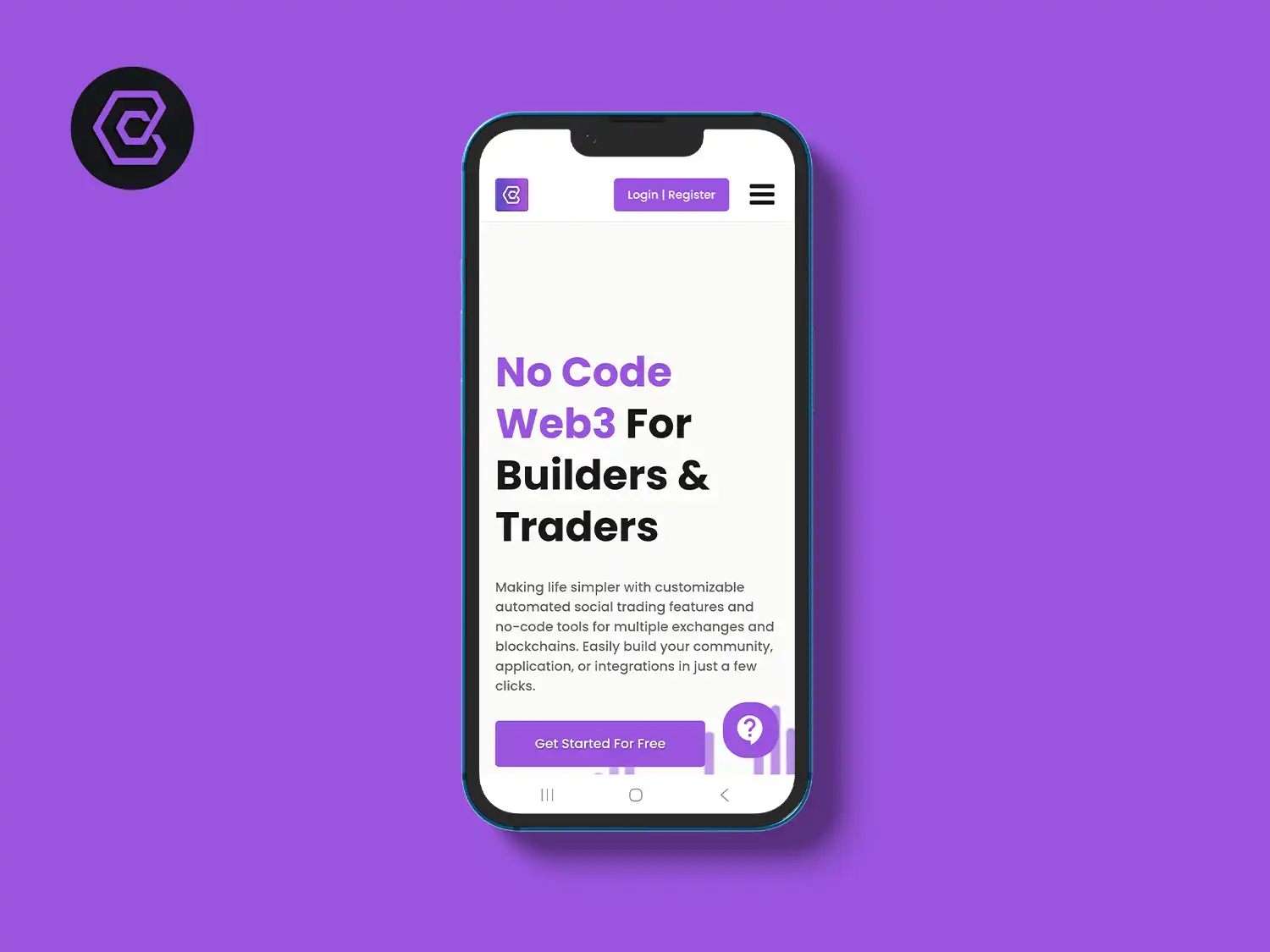
This case study explains how Compendium developed automated crypto trading systems supporting fast execution, secure strategies, and efficient decentralized trading.
ViewOur crypto wallet development services enable various sectors, including finance, healthcare, real estate, education, and eCommerce, to engage in secure transactions. We offer multi-chain asset management and AI-driven scalability, providing dependable crypto wallet solutions tailored to meet a wide range of business requirements.
Banks and fintech companies use crypto wallets to safely store customer digital assets and allow fast transactions. These wallets hold important items like private keys that give access to funds, stablecoins such as USDT or USDC for everyday payments, tokenized versions of traditional money and transaction history records.
Gaming and metaverse platforms use crypto wallets to securely hold a player’s digital assets and enable smooth in-game transactions. These wallets store in-game tokens used for purchases, character NFTs such as skins or special items, and even metaverse land NFTs that represent virtual property.
These wallets store tokenized property shares, digital proof of ownership, and smart contracts used for buying, selling, or leasing property. This makes it easier to verify ownership, manage transactions, and process crypto-based payments without relying on slow traditional paperwork.
Healthcare organizations use crypto wallets to hold encrypted health records, digital health IDs, and medical insurance tokens, helping hospitals and clinics keep patient information safe while making medical processes faster and more reliable.
Supply chain companies use crypto wallets to track shipment details, verify important documents, and automate payments using smart contracts. These wallets store tokenized invoices, shipment certificates, and tracking hashes that confirm product authenticity.
E-commerce and retail businesses use crypto wallets to accept crypto payments, manage customer rewards, and support multiple digital currencies. These wallets store customer crypto like BTC or ETH, loyalty reward tokens, and even gift card tokens.
Government agencies use crypto wallets to manage digital identities. These wallets store digital ID credentials, CBDC tokens issued by the central bank, and public service records. This helps governments offer faster, safer, and more transparent digital services to citizens.
Educational platforms use crypto wallets to verify student identities, store academic credentials, and automate scholarship or reward payments. These wallets hold digital student IDs, blockchain-based certificates, and tokenized rewards or scholarships.
Banks and fintech companies use crypto wallets to safely store customer digital assets and allow fast transactions. These wallets hold important items like private keys that give access to funds, stablecoins such as USDT or USDC for everyday payments, tokenized versions of traditional money and transaction history records.
Gaming and metaverse platforms use crypto wallets to securely hold a player’s digital assets and enable smooth in-game transactions. These wallets store in-game tokens used for purchases, character NFTs such as skins or special items, and even metaverse land NFTs that represent virtual property.
Crypto wallets let you store, send and receive digital money without banks or middlemen.
Your private key gives you full control of your funds and proves you own your crypto.
Non-custodial wallets are the safest because only you can access your assets.

Our cryptocurrency wallet development services support Blockchain networks delivering secure, scalable and user-friendly crypto wallet solutions for seamless digital asset management worldwide.
















We use a trusted tech stack for cryptocurrency wallet integrating blockchain frameworks encryption protocols and multi-layer security. Our crypto wallet solutions ensure scalability, transparency and protection empowering businesses with secure, efficient and high-performing digital wallet applications for global users.
AI-driven innovation is revolutionizing crypto wallet development transforming traditional wallets into intelligent, secure and data-driven ecosystems.
AI security instantly detects unusual activity, preventing fraud and protecting user assets effectively.
AI upgrades crypto wallets, helping users make smarter decisions while keeping their funds secure.
Automation reduces manual effort, making crypto wallets faster, smoother, and easier to manage.
Predictive insights reveal trends, price changes, and transaction patterns before they actually occur.
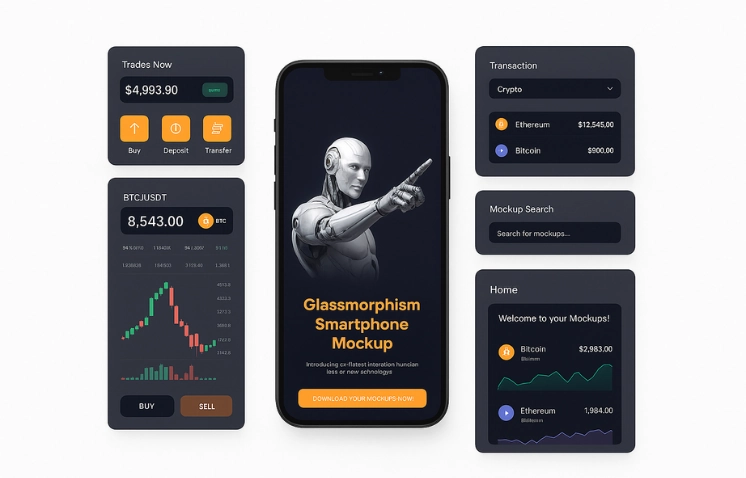
At Nadcab Labs a leading crypto wallet development company we follow a proven and structured development framework to deliver secure, scalable and high performance Cryptocurrency wallet development services. Our approach ensures every crypto wallet is engineered with precision, industry grade security and seamless user experience setting a strong foundation for trust and long term growth.
We begin by clearly understanding what type of crypto wallet you want to build its features, users, security needs and business goals. This helps us design the right architecture and select the best blockchain networks to work with. Tools like Jira, Notion and networks such as Ethereum, Polygon or Solana are used in this stage.
Accelerate your growth with secure, scalable and AI-powered crypto wallet development solutions that simplify digital asset management enhance transaction transparency and build long-term customer trust in the evolving world of decentralized finance.
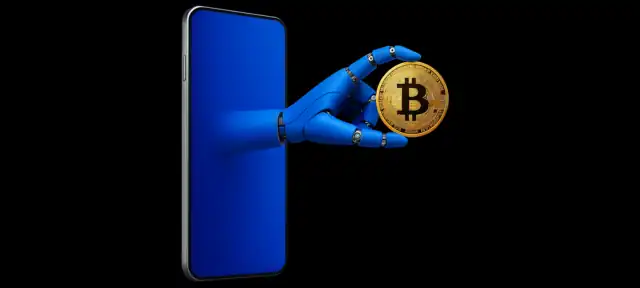
Recognized as a top cryptocurrency wallet development company Nadcab Labs has received multiple awards for blockchain innovation user, experience and enterprise-grade security.






We take a strategic approach to delivering tailored cryptocurrency wallet development services. Our team analyzes your business objectives, security needs and technology stack to provide an accurate flexible cost estimate.Key Factors Influencing Wallet Cost.
Feature Complexity Analysis
Security and Compliance
Platform Integrations
Blockchain and Tech Stack

A cryptocurrency wallet app securely stores, sends, and receives digital assets such as Bitcoin and Ether while handling both sets of keys to secure user funds. All transactions occur on the blockchain for maximum transparency and reliability. As a trusted specialist in cryptocurrency wallet app development, we deliver wallet solutions that provide strong security, ease of use, and efficiency in managing digital assets.
It creates secure crypto wallet applications for individuals and businesses that integrate access to public blockchain networks for secure digital asset access. It manages private keys within the wallet with high-security protocols, allowing users complete control and security over their holdings. These offerings are tailored to fit requirements for personalized cryptocurrency wallet solutions with a focus on usability and security.
Crypto wallet app Development services does not hold coins; it generates a private key that allows users to connect to the assets they own on the blockchain. When anybody sends or receives cryptocurrency, the wallet verifies and completes the transaction by communicating with the blockchain. As an established cryptocurrency wallet development company, we make sure these operations are secure, efficient, and smooth as possible for each user.
We offer Web Wallets that operate directly in the browser and allow for easy and secure access to crypto assets. Our Mobile Wallets are designed for iOS and Android with an optimized user experience that feels seamless and high-performing. For users who wish to take their crypto assets offline, we provide robust Desktop Wallets with sophisticated security. We also offer DeFi & Multi-Chain Wallets as well as White Label Crypto Wallet Development with complete customizability to aid businesses in quickly launching a powerful wallet platform.
On average, it takes 4 to 6 weeks to build a basic wallet and 8 to 12 weeks for a more advanced wallet that includes integrations that are customized for a client. The timeline depends on the blockchain, the technology stack or platform, and the general complexity of the wallet project. All of these criteria will dictate the delivery timeframe of any cryptocurrency wallet development.
Ethereum, Binance Smart Chain, Polygon, Tron, and Solana act as popular blockchain networks, whereas programming stacks such as Node.js, React, Python, and Web3.js provide robust wallet capabilities. Advanced security protocols like MPC, AES, and two-factor authentication provide a robust layer of security for the digital assets within the wallet. Our team has expertise in Crypto wallet application development and merging all these technologies in a way that the wallet we produce is secure, scalable, and high performing as you would expect.
Absolutely, our white-label cryptocurrency wallet development solutions offers off-the-shelf wallet solutions that are fully customizable and can be quickly deployed. Our wallets support multiple blockchain networks, have DeFi functionality built-in, and provide smooth and secure digital asset management. With an emphasis on scalability, performance, and reliability, our solutions allow businesses to deploy executive class platforms without downtime. Our wallets are designed to maximize performance, increase security, and provide smooth user experiences. Overall, our white-label wallet solutions give businesses the ability to quickly and efficiently build secure, scalable, and feature-rich digital asset platforms.
In the case of small wallets, costs tend to run from $20K to $40K, while multi-chain or DeFi wallets would generally be in the range of $50K to $80K+, which can depend on a number of factors such as design complexity, user interface requirements, which platform or technology stack is utilized and specific features that are included. In the end, the overall cost depends on the scope or functionality provided by the wallet development company, where each component, whether it be performance or security, meets the requirements of the project at the end.
As an established Crypto Wallet Development Company, we create safe, scalable, and feature-rich wallet solutions for all business needs. Our team offers advanced multi-chain wallet builds with functionalities, including staking, swapping, DeFi features, and increased security. Our first priority to create a powerful, safe, efficient crypto wallet is a user-centered approach, and we tailor it to each client. We make sure our clients are ready for the future of digital finance.
When selecting Aalpha for your cryptocurrency wallet development solutions, you are guaranteed that our team possesses excellent technical skills, robust security practices, and proven expertise in developing high-performance blockchain products. We focus on providing highly customized, scalable, and user-first wallets that meet industry standards, with a specific focus on the three core tenets of quality, innovation, and timeliness in delivery. Aalpha’s Cryptocurrency Wallet Development Services are reliable, safe, powerful, and future-oriented.
The global crypto wallet market Growth is projected to reach US$ 4.18 billion in 2025 with a CAGR of 29.8% through 2035.According to Global Crypto wallet market size could hit US$ 18 billion in 2025 growing to US$ 153.9 billion by 2033 (CAGR 30.8%).Grand View Research estimates a CAGR of 26.3% from 2025 to 2033 with the market reaching US$ 100.8 billion by 2033.With such strong growth indicators, partnering with a trusted Cryptocurrency wallet development company becomes essential for businesses aiming to build secure, scalable and future-ready digital wallet solutions.
Get Market Insights